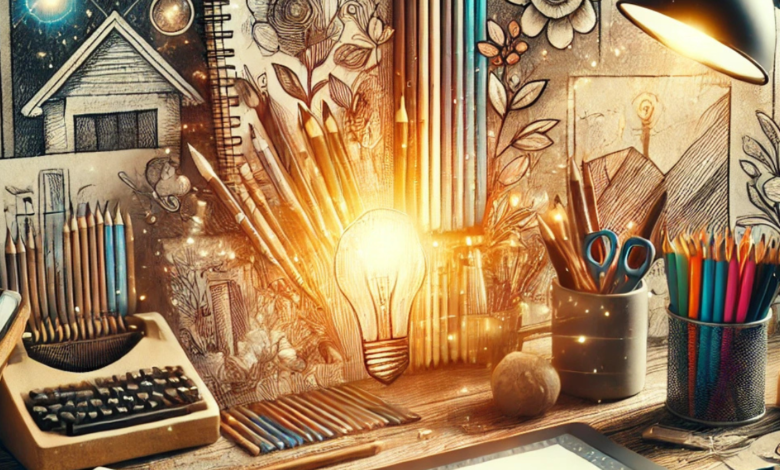World of Drawings: Exploring Creativity and Expression

Introduction to Drawings: The Heart of Artistic Expression
Drawings are one of the most ancient and versatile forms of art, a universal language that transcends boundaries and connects people across cultures. From cave paintings created thousands of years ago to modern digital sketches, drawing has always been a tool to communicate, document, and express emotions. It’s an art form that combines imagination, skill, and storytelling.
In essence, a drawing is much more than lines and shapes. It’s a reflection of the artist’s thoughts, emotions, and experiences. This art form has evolved significantly over time, incorporating new techniques and tools while remaining deeply personal. Drawing is also incredibly accessible—you only need a pencil and a piece of paper to begin, making it a favorite among both beginners and professionals.
The beauty of drawings lies in their diversity. Artists can use pencils, pens, charcoal, or even digital tablets to bring their visions to life. Each medium offers a unique texture and style, allowing the artist to create works that are truly one-of-a-kind.
A Brief History of Drawings: From Caves to Contemporary Art
Drawing has been a part of human culture for as long as we’ve existed. Early humans used drawings to communicate and document their surroundings, carving images of animals and daily life into the walls of caves. These cave paintings, such as those found in Lascaux, France, are a testament to humanity’s innate need to express and record experiences.
As civilizations advanced, so did drawing techniques. Ancient Egyptians used drawings to illustrate their hieroglyphic scripts, blending art with writing to tell stories of gods, kings, and daily life. Meanwhile, in ancient Greece and Rome, drawings became more realistic, focusing on proportions and anatomy to capture the human form.
The Renaissance marked a turning point in the history of drawings. Artists like Leonardo da Vinci and Michelangelo elevated drawing to a fine art, using it as a foundation for painting, sculpture, and architecture. Their sketches were not merely preparatory works but masterpieces in their own right, showcasing the artist’s skill and vision.
In the modern era, drawing has expanded into countless styles and movements. From the abstract sketches of Pablo Picasso to the hyper-realistic portraits of today’s digital artists, drawing continues to evolve, reflecting the changing tastes and technologies of the times.
The Types of Drawings: Exploring the Wide Spectrum of Styles
Drawing is a diverse art form with countless styles and techniques. Each type of drawing offers a unique way for artists to express themselves and connect with their audience.
1. Sketchin
Sketching is often the first step in any artistic process. It’s quick, rough, and focused on capturing the essence of a subject rather than the details. Sketches are commonly used by architects, fashion designers, and illustrators to develop ideas and concepts.
2. Realistic Drawings
Realism in drawing aims to depict subjects as they appear in real life. This style requires a deep understanding of proportions, lighting, and textures. Realistic drawings can range from portraits to landscapes and are often admired for their lifelike quality.
3. Abstract Drawings
Abstract drawings break away from traditional representation, focusing on shapes, colors, and forms to evoke emotions and ideas. This style allows for endless creativity and interpretation, making it a favorite among experimental artists.
4. Technical Drawings
Used in engineering, architecture, and design, technical drawings are precise and detailed. These drawings communicate specific information, such as dimensions and materials, and are essential in construction and manufacturing.
5. Digital Drawings
With the rise of technology, digital drawing has become increasingly popular. Using software like Procreate or Adobe Illustrator, artists can create intricate designs, illustrations, and animations with ease.
The Tools of the Trade: Essential Supplies for Drawing
Every artist needs the right tools to bring their vision to life. While the basic supplies remain simple, modern advancements have introduced new materials and technologies that enhance the drawing experience.
Traditional Tools
For traditional artists, pencils are a staple. Graphite pencils come in various grades, from soft (B) to hard (H), allowing for different levels of shading and detail. Charcoal and ink pens are also popular for their bold lines and dramatic effects.
Paper Choices
The type of paper you use can significantly impact your drawing. Smooth paper is ideal for fine details, while textured paper adds depth and character to charcoal and pastel drawings. For technical drawings, grid paper or drafting sheets are commonly used.
Digital Tools
Digital drawing tablets, such as Wacom or iPads with styluses, have revolutionized the art world. These tools offer endless possibilities, from layering and color correction to animation. Digital drawing eliminates the need for physical supplies, making it a sustainable option for modern artists.
The Benefits of Drawing: Why Everyone Should Pick Up a Pencil
Drawing isn’t just for artists—it’s a valuable activity for people of all ages and backgrounds. Whether you’re sketching casually or pursuing it as a profession, drawing offers numerous benefits.
1. Stress Relief
Engaging in drawing can be incredibly therapeutic. The repetitive motion of sketching and shading helps calm the mind and reduce anxiety. Many people turn to drawing as a form of mindfulness, focusing on the present moment.
2. Improved Focus and Patience
Creating a detailed drawing requires concentration and attention to detail. These skills translate into other areas of life, improving productivity and problem-solving abilities.
3. Enhanced Creativity
Drawing stimulates the brain and encourages creative thinking. It allows you to explore new ideas, experiment with different styles, and think outside the box.
4. Better Motor Skills
For children and adults alike, drawing improves fine motor skills and hand-eye coordination. These skills are essential for tasks ranging from typing to playing musical instruments.
Learning to Draw: Tips for Beginners
If you’re new to drawing, don’t be intimidated! Like any skill, drawing improves with practice and patience. Here are some tips to get started:
1. Start Simple
Begin with basic shapes and lines. Practice drawing circles, squares, and triangles to build your hand control and confidence.
2. Observe the World Around You
Pay attention to the details in your environment. Study how light falls on objects, how shadows form, and the way textures interact. Observation is key to improving your drawing skills.
3. Experiment with Different Tools
Try various pencils, pens, and papers to find what works best for you. Don’t be afraid to explore digital tools as well, especially if you’re interested in modern techniques.
4. Learn from Others
Take inspiration from other artists. Watch tutorials, join drawing classes, or attend workshops to learn new techniques and gain valuable feedback.
Conclusion: The Endless Possibilities of Drawings
Drawing is a timeless art form that continues to inspire and captivate people worldwide. Whether it’s a quick sketch or a detailed masterpiece, drawings have the power to tell stories, evoke emotions, and spark creativity. With so many styles, tools, and techniques to explore, the possibilities are truly endless.
If you’ve ever felt the urge to pick up a pencil and start drawing, there’s no better time than now. Embrace the journey, experiment with your style, and let your imagination guide you. After all, every great artist started with a single line.





